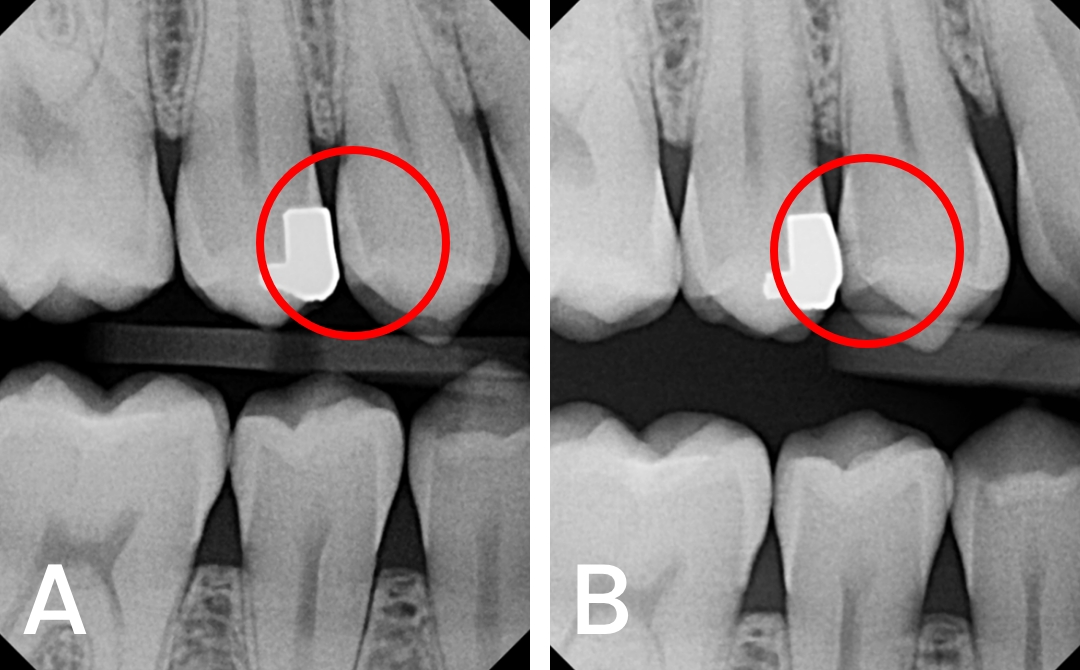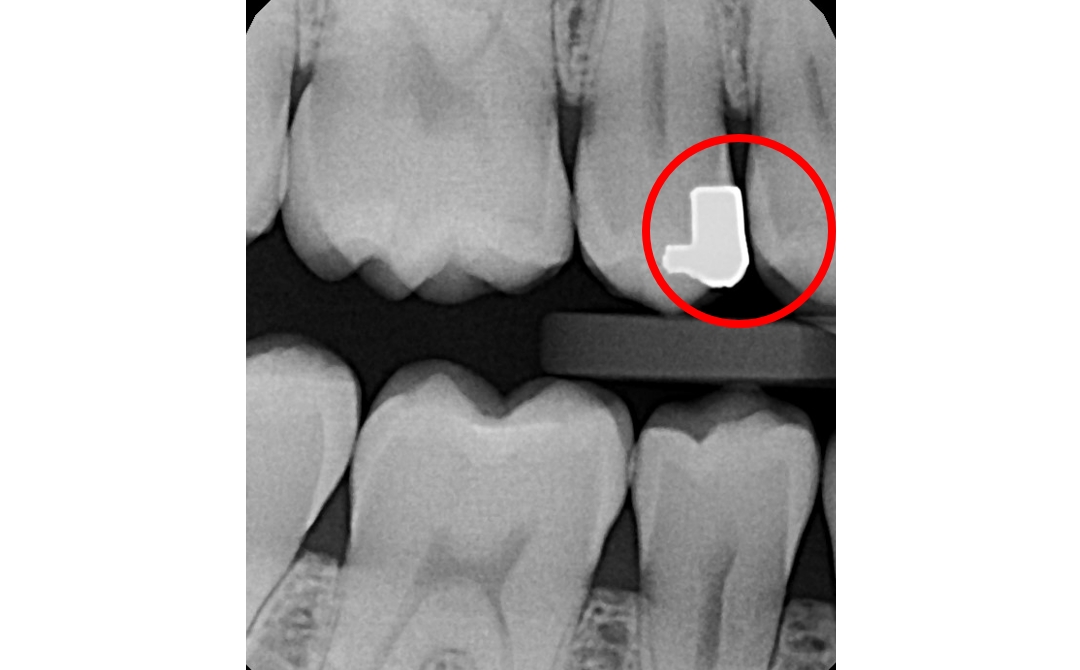

Patient Presentation and examination:
Diagnosis:
Treatment:
Follow-up: At the 4-month follow-up, the following observations were made: (Figure 2)
Reduction in the size and radiolucency of the treated lesion to the very outer enamel, indicative of remineralization.
Take-away: Interproximal tooth surfaces adjacent to surfaces with faulty restorations, in this case an overhanging restoration, are at a risk of developing caries due to food entrapment and the difficulty in effective cleaning. In case of an inability to re-do the restoration correctly, such as when there is lack of patient consent, repeated follow ups to prevent and treat initial carious lesions on the adjacent proximal surface can be invaluable.